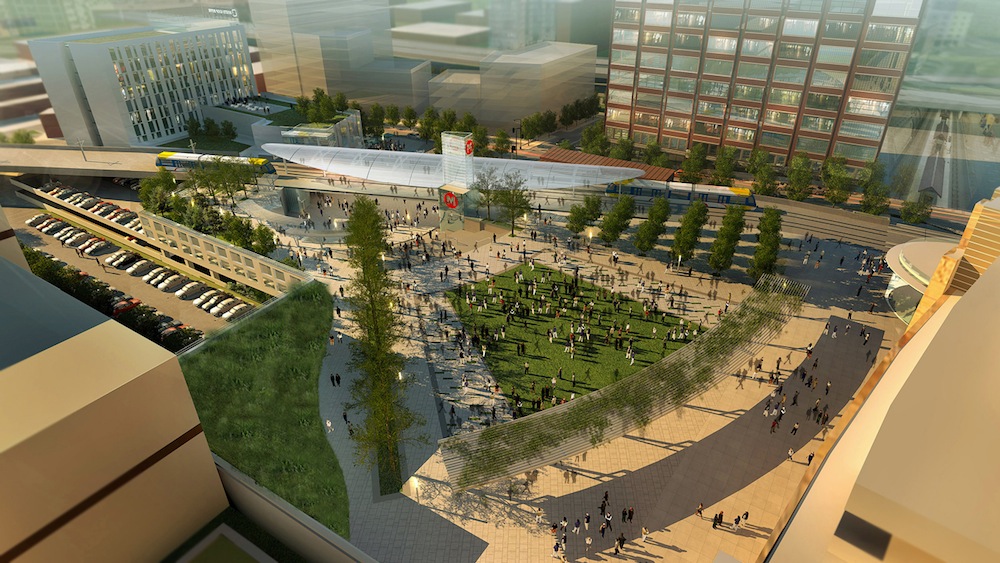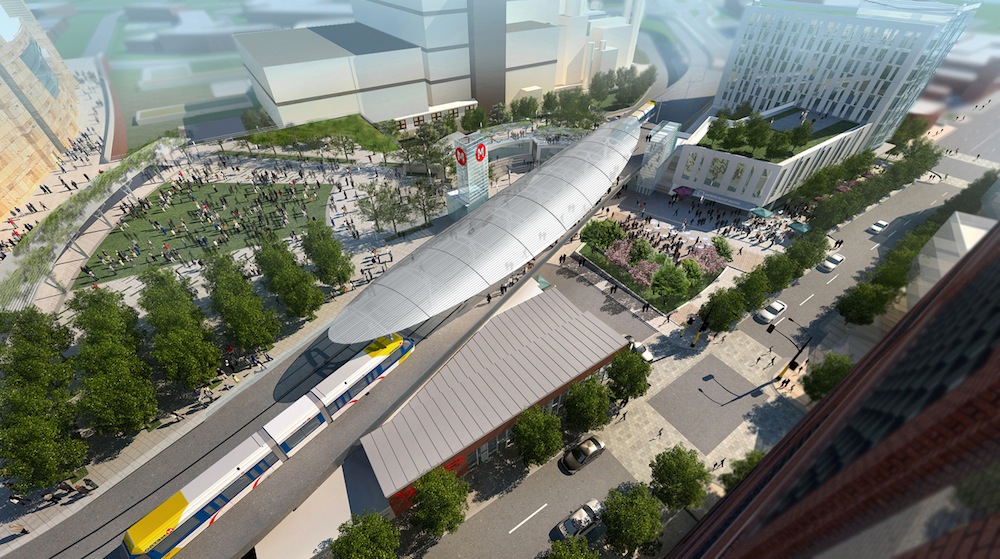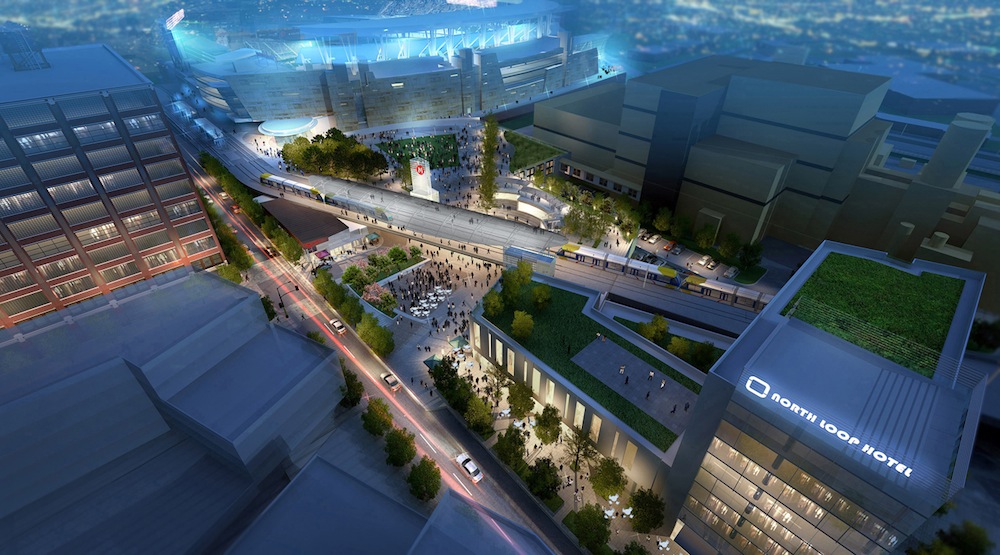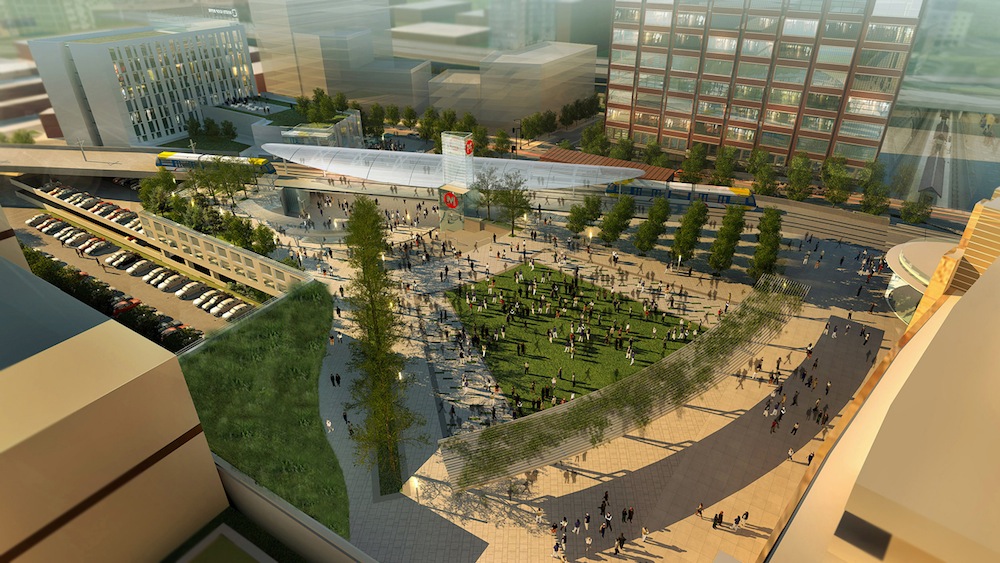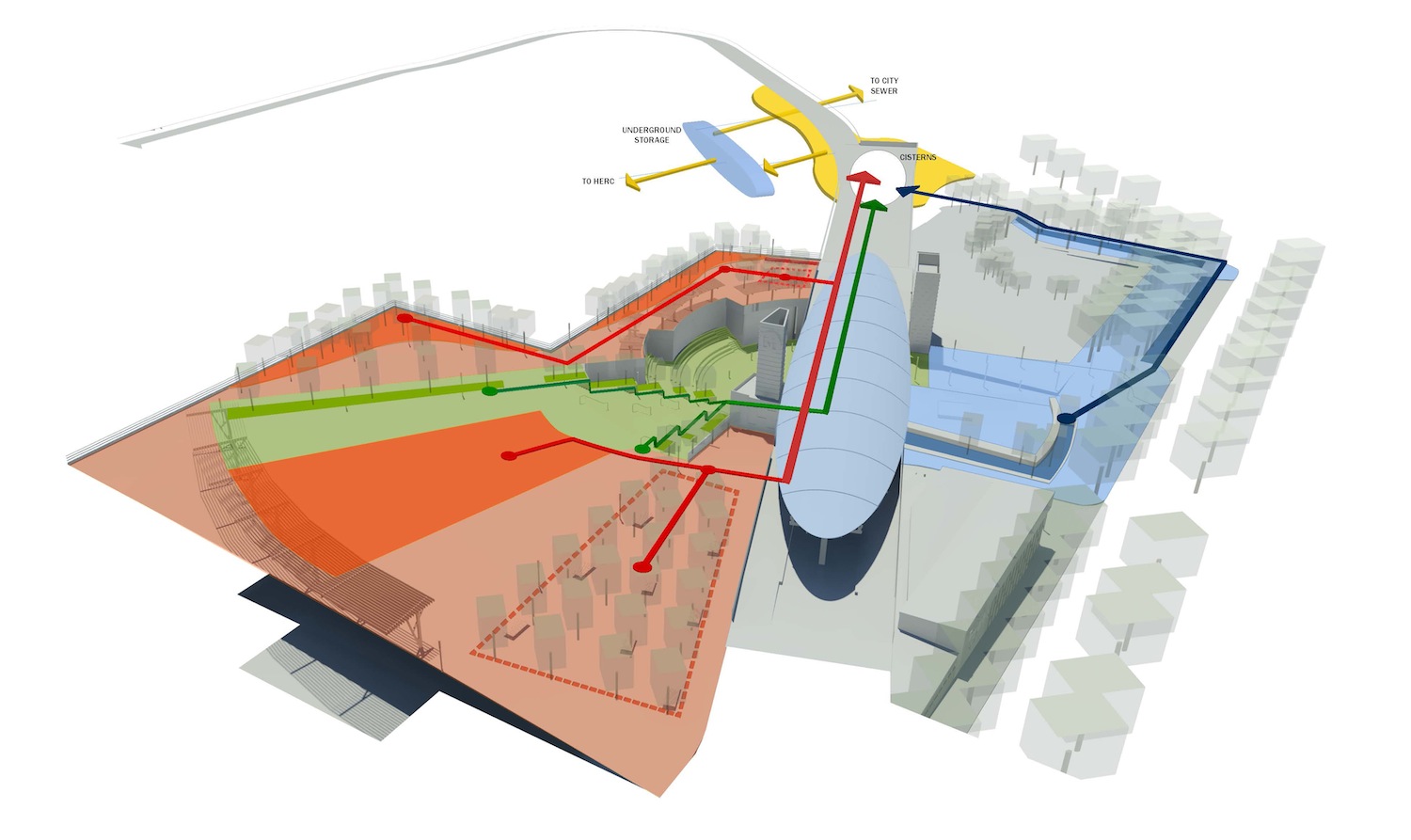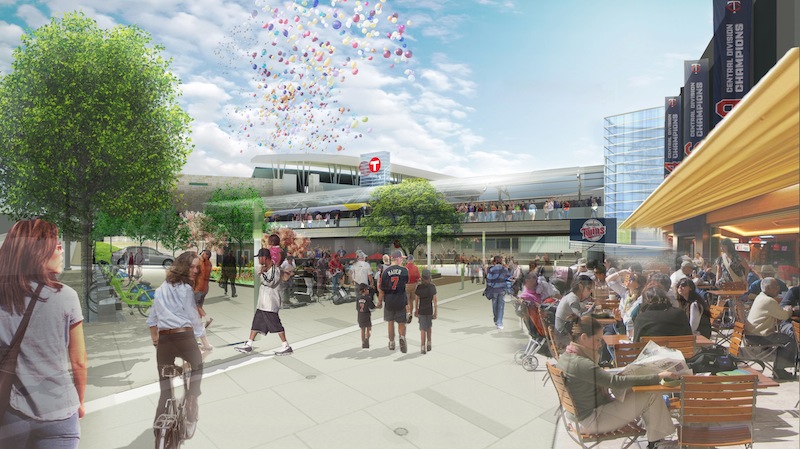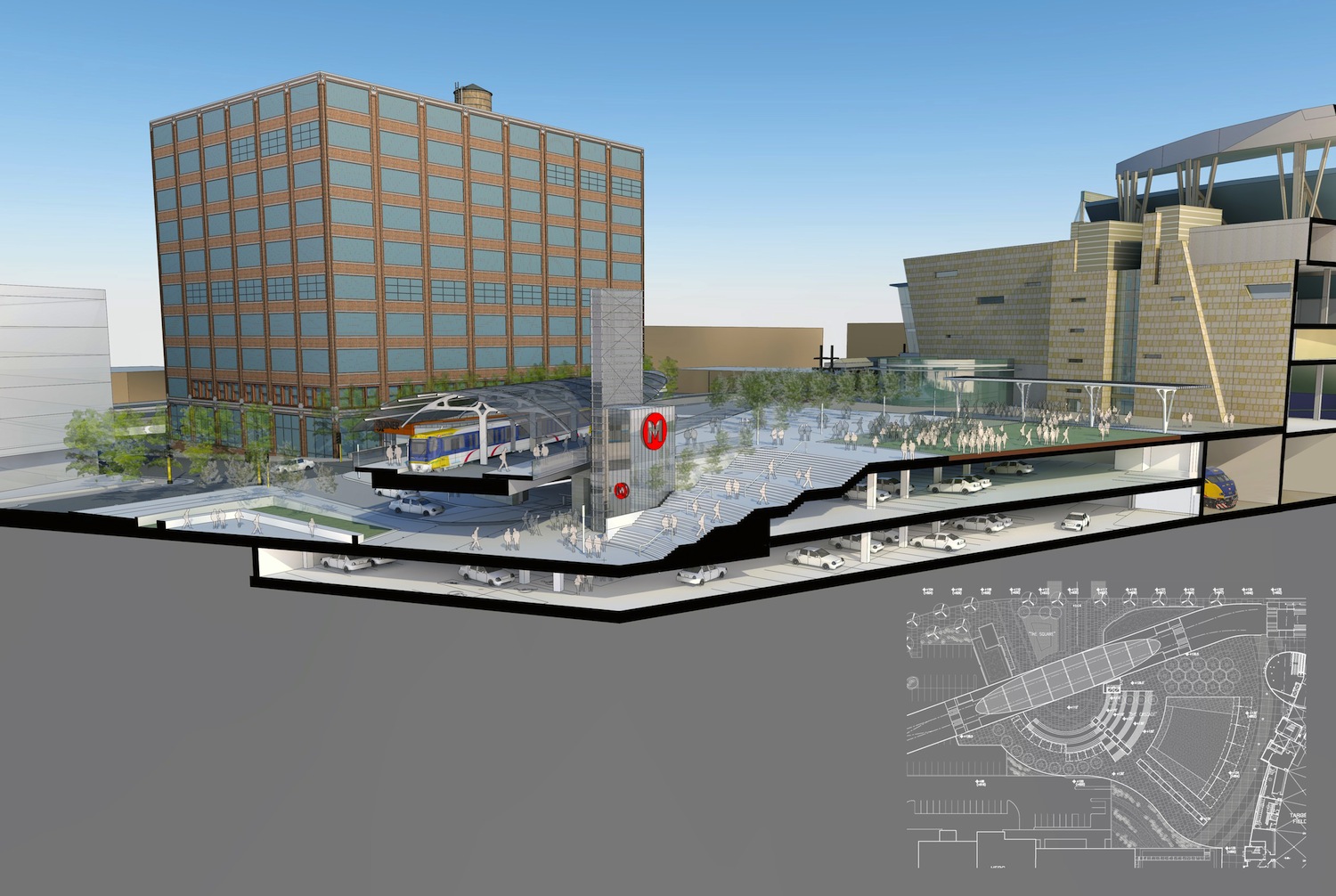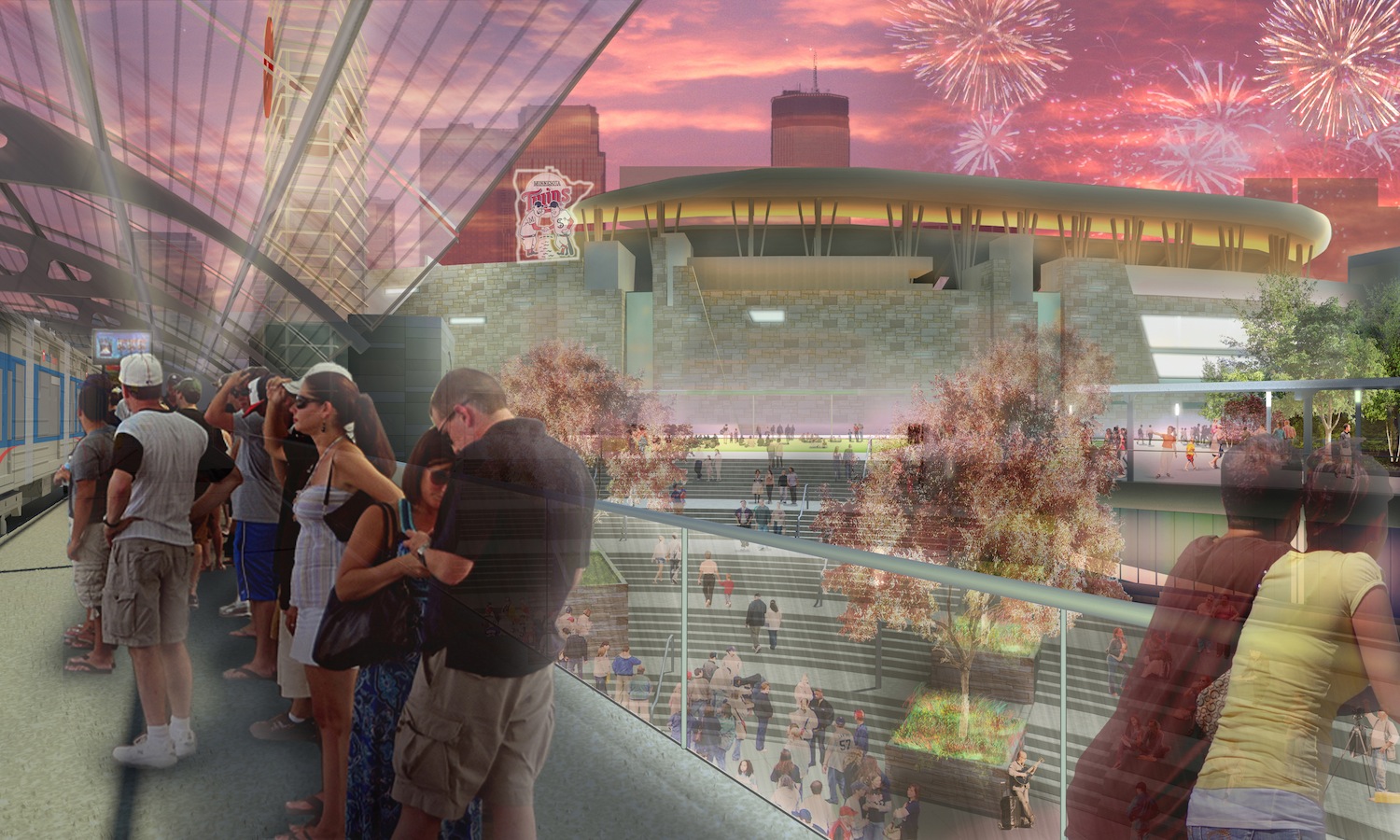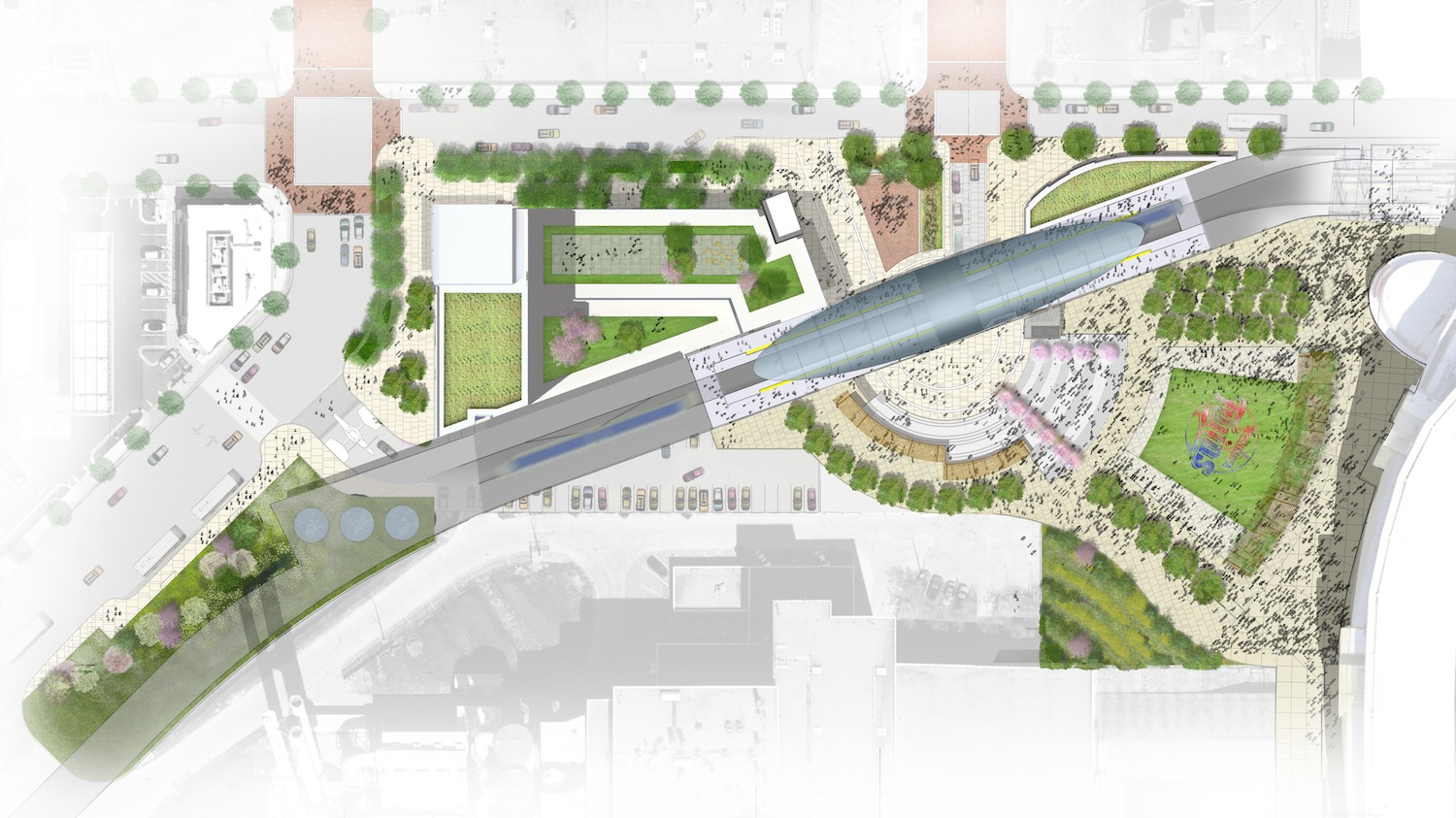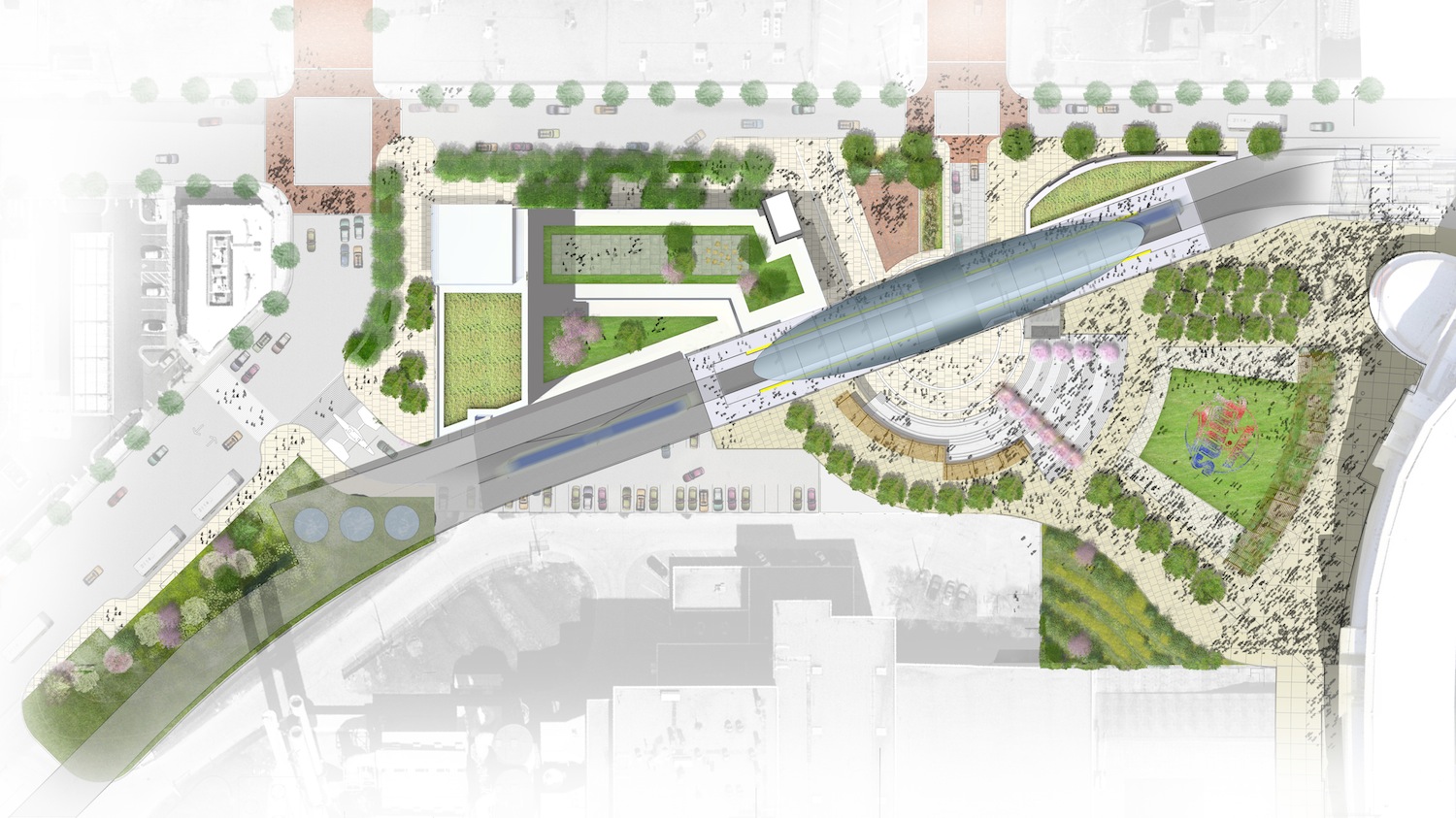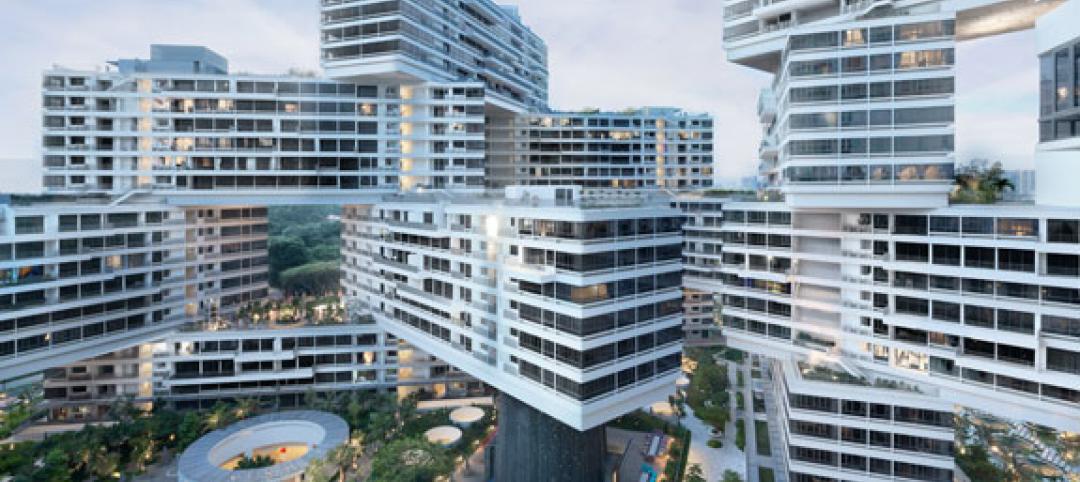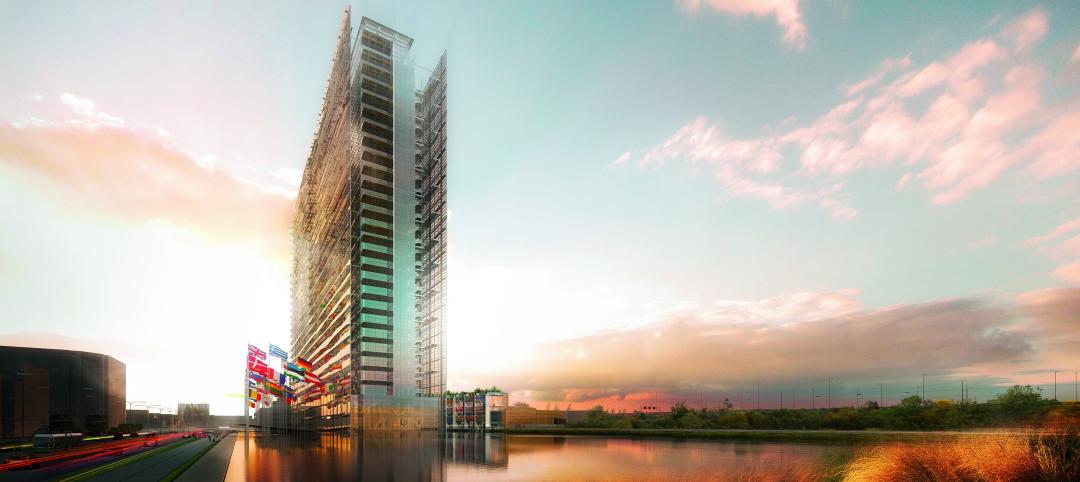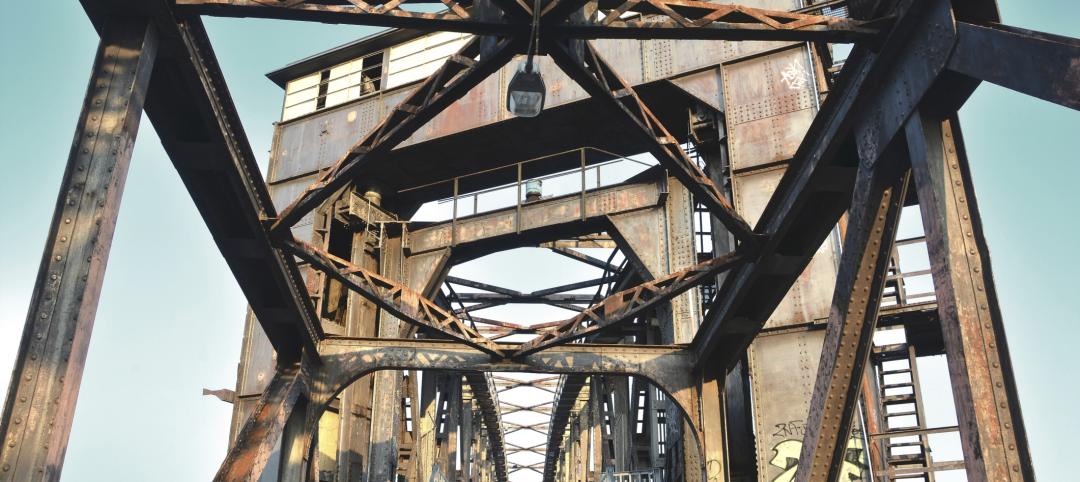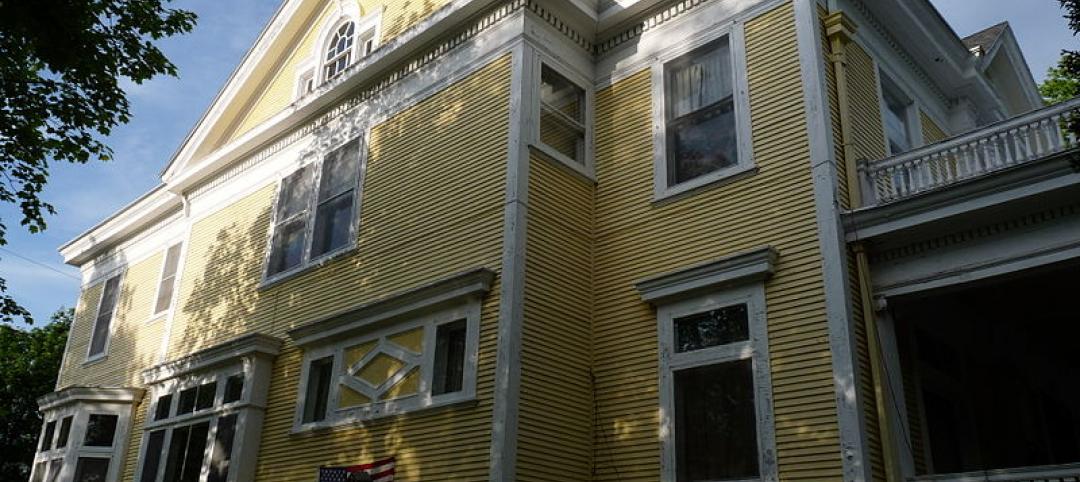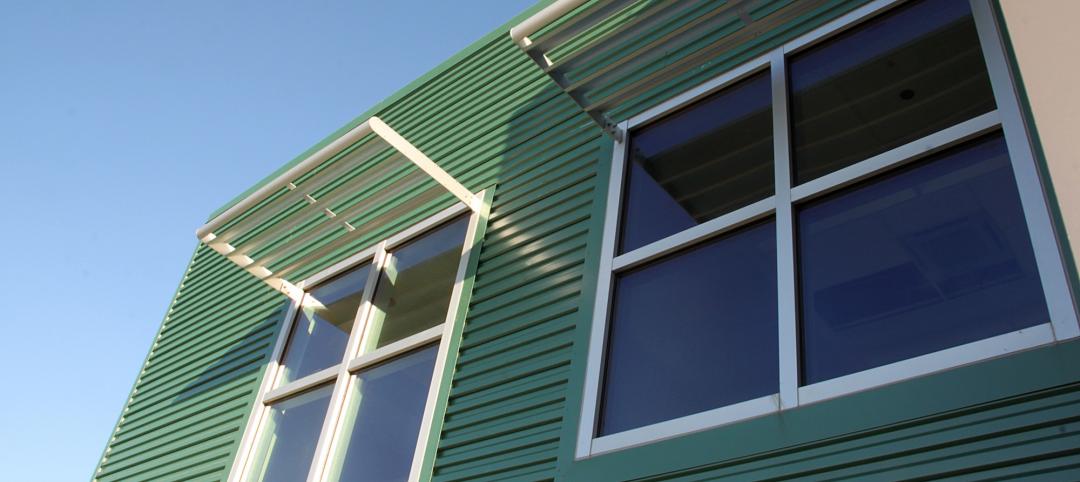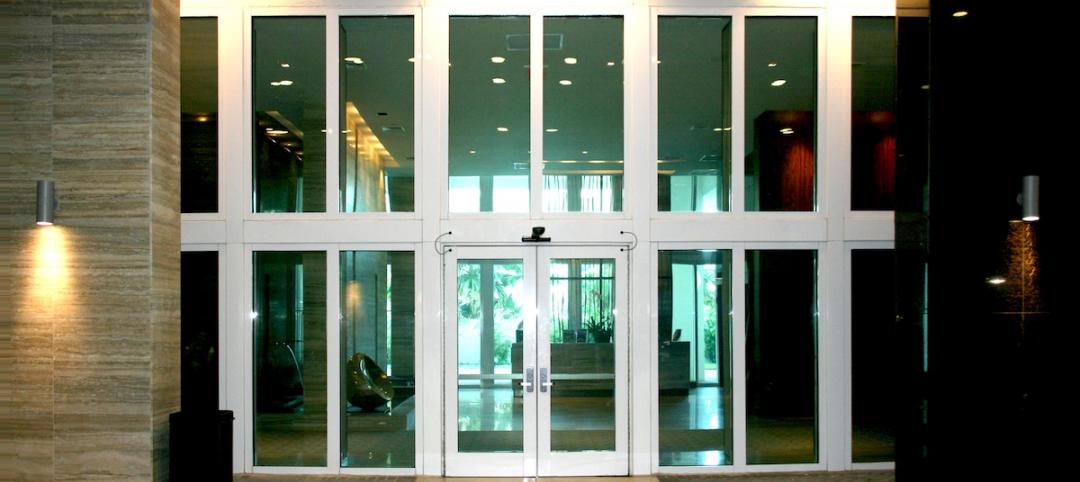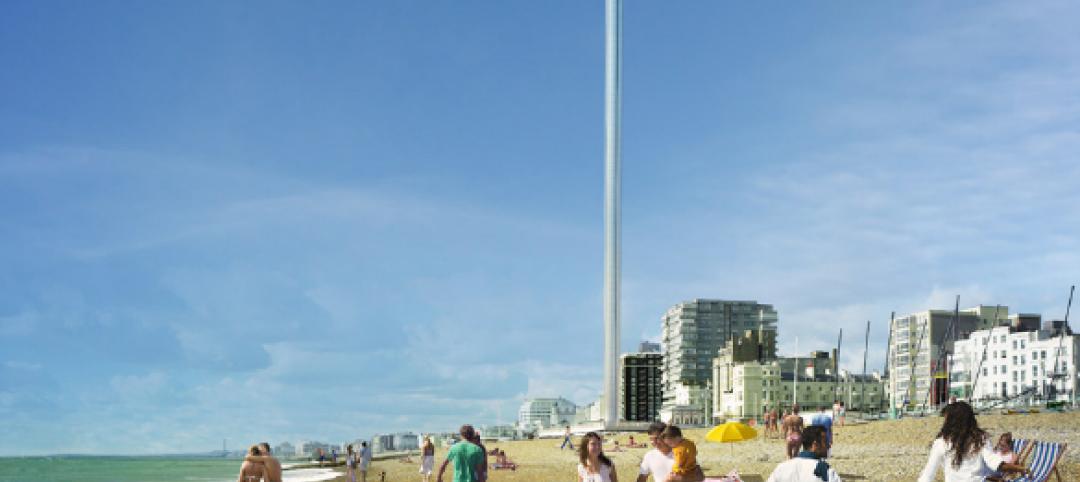Great cities are defined by great places. It is the avenues, squares, grand halls and, of course, the people who inhabit them that give a city its character. A unique blend of architecture, open space, transit, infrastructure, history, culture, and art, the Interchange represents an exciting vision of this character manifest in an urban environment. The goal for the Interchange is to create a place that is uniquely tailored to Minneapolis and its citizens—a place that is iconic, modern, and timeless. It will fulfill people’s aspirations for clean and efficient transportation while also serving as a proud calling card for those who call the city and metro area their home.
The Interchange will serve as the main transportation hub for the northern Minneapolis region. Situated a few blocks from the banks of the Mississippi River, the new station will connect approximately 500 arriving and departing trains daily, more than 1,900 daily bus routes, and hundreds of miles of bike and walking trails. This bold transit project is the result of a partnership between Hennepin County, the Hennepin County Regional Railroad Authority, and the Hennepin County Housing and Redevelopment Authority. It is funded by a mix of federal, state, and local sources, more than half of which comes from local government. During the construction phase, the Interchange will create more than 300 full-time local jobs. The design-build team is being led by EE&K a Perkins Eastman company and Knutson Construction.
Open Transit Design
History has taught us that the design visionaries behind the truly great transit destinations intended to create an infrastructure that functioned beyond as a transit hub. These projects used transit as a vehicle to design iconic spaces—the great hall, the retail passages, and the city sightlines that embody the culture of a city—while creating enormous real estate value. And this is what the City of Minneapolis and surrounding Hennepin County were trying to achieve with the Interchange. Designed by EE&K, a Perkins Eastman company, this nexus of transit and culture is based on a set of design principles called "Open Transit" that have been developed over the last 15 years.
Open Transit is a set of principles for modern station design that incorporate the surrounding spaces and additional modes of transportation to create an overall iconic place. If we are to make cities more sustainable we need to create transit places that will also sustain and enhance urban life and foster development. The Interchange exemplifies this concept in several ways: integration of all available transit modes, an orientation toward real estate development, architectural design that make places, and the integration of culture with transit design. The station will function as a backdrop to performance stage and appeal for non-transit users—people want to be there even if they aren’t using transit.
Making Development the Priority
The design of the Interchange is compact and connects seamlessly with the façade of Target Field, home to the Minnesota Twins baseball team. With such a modest footprint, the Interchange opens up the remainder of the site to maximize development opportunities. By leveraging the value of the 6th Avenue/5th Street intersection, this new development and subsequent ones within the site will help create a key link between the historic North Loop neighborhood and downtown Minneapolis. The Interchange will be a model for how transit design can stimulate economic development and foster environmental stewardship.
Transit centers designed according to the principles of Open Transit are development-oriented, meaning they catalyze investment in a region as much as they follow it. One of the current challenges of the site that the Interchange addresses is the massive influx of people to the area since the introduction of Target Field, which opened in 2010. And the opportunities it creates are even greater than the problems it solves. The team behind the Interchange explored at length how to integrate existing amenities into one new place that capitalized on a new transit line.
As a result, the hub will comprise the Cascade Amphitheater, a Great Lawn, and commuter-oriented retail. Each will provide the community with numerous programming possibilities that will serve the immediate and surrounding area year-round. The cascading staircase that can be used as an amphitheater, gathering space, and vertical transportation to the Great Lawn will draw people from all over for a relaxing picnic or a quiet respite from the bustle of city life.
The Interchange will create a new emblem of civic identity and community pride in its mix of uses by introducing the first of a new generation of facilities that truly integrate transit and culture. Like Grand Central in New York City, it will draw tourists, workers, shoppers and diners. As an oasis in a part of the city where large-scale freeway infrastructure collides with the historic grand warehouses of the North Loop neighborhood, it will fundamentally change Minneapolis and catalyze future development in the area.
Seamless Sustainability
The Interchange in Minneapolis pushes the lessons of Open Transit design even further with a holistic approach to the building as an environmentally responsible community member. It aims to help sustain Minneapolis's urban revival by incorporating features like rainwater collection for irrigation and building use, and a symbiotic use of water with recycling trash. The LEED-certified and Minnesota State-recognized B3 accredited development will use heat from the nearby Hennepin Energy Recovery Center (HERC) to heat sidewalks in the winter months. All concrete removed from the existing site will be re-incorporated back into the project, helping to curb costs related to trucking and the procurement of imported crushed rock. The new HERC administration building on the site is being designed with energy-efficient components, which will cut overall energy consumption by 30%.
Open Transit design represents the future of sustainable transit development in America’s vibrant urban centers, re-envisioning and refashioning the best of the past for the future. The Interchange in Minneapolis will be one of the most efficient demonstrations in the United States of how transportation can integrate with commerce and culture to create rich development opportunities.
Construction on the Interchange continues on schedule, and the project will open in April of 2014.
Related Stories
| Jun 30, 2014
Harvard releases the State of the Nation’s Housing 2014
Although the housing industry saw notable increases in construction, home prices, and sales in 2013, household growth has yet to fully recover from the effects of the recession, according to a new Harvard University report.
| Jun 30, 2014
OMA's The Interlace honored as one of the world's most 'community-friendly' high-rises
The 1,040-unit apartment complex in Singapore has won the inaugural Urban Habitat award from the Council on Tall Buildings and Urban Habitat, which highlights projects that demonstrate a positive contribution to the surrounding environment.
| Jun 30, 2014
Work starts on Jean Nouvel-designed European Patent Office in the Netherlands [slideshow]
With around 80,000 sm and a budget of €205 million self-financed by the EPO, the complex will be one of the biggest office construction sites ever in the Netherlands.
| Jun 30, 2014
Growth of crowdfunding, public-private partnerships among top trends in architecture marketplace
A new report by the American Institute of Architects highlights several emerging trends in the architecture marketplace, including the growth of the P3 project delivery model and designing for health.
| Jun 30, 2014
Report recommends making infrastructure upgrades a cabinet-level priority
The ASCE estimates that $3.6 trillion must be invested by 2020 to make critically needed upgrades and expansions of national infrastructure—and avoid trillions of dollars in lost business sales, exports, disposable income, and GDP.
| Jun 30, 2014
Gen X, not Baby Boomers, spending the most money on homes [infographic]
It turns out that Generation X, who have the highest incomes of the three generations surveyed, are paying the highest home payments and tend to have the largest households.
| Jun 30, 2014
Zaha Hadid's Iraq Parliament complex design marred with controversy
Zaha Hadid's design for the Iraq Parliament was selected, despite placing third in the original RIBA-organized competition.
Sponsored | | Jun 27, 2014
SAFTI FIRST Now Offers GPX Framing with Sunshade Connectors
For the Doolittle Maintenance Facility, SAFTI FIRST provided 60 minute, fire resistive wall openings in the exterior using SuperLite II-XL 60 insulated with low-e glazing in GPX Framing with a clear anodized finish.
| Jun 26, 2014
Glazing offers peace-of-mind for hurricane season
SPONSORED CONTENT As hurricane season kicks into high gear, it reinforces the importance of balancing the aesthetic and daylight enhancements of glazing with the safety requirements to protect people and structures from hurricane-force winds.
| Jun 26, 2014
Plans for Britain’s newest landmark brings in international cooperation
Designers of the London Eye will team up with companies from France, the Netherlands and the United States to construct i360 Brighton, the U.K.'s newest observation tower.


